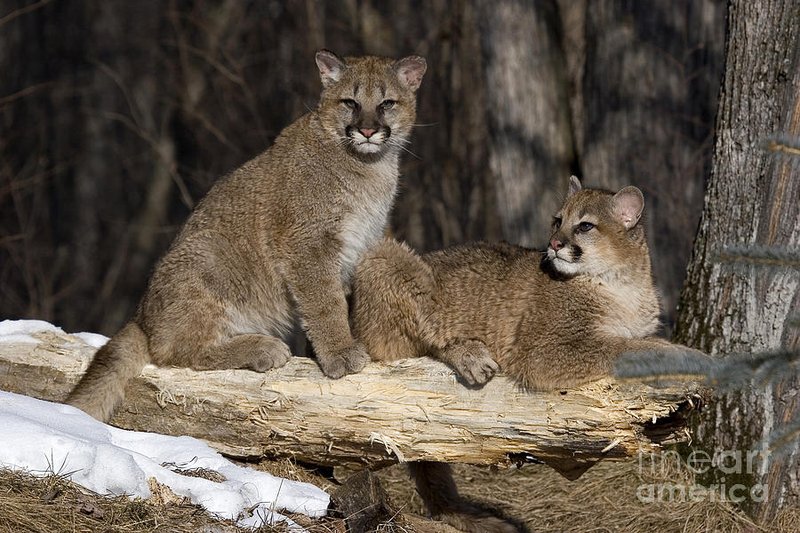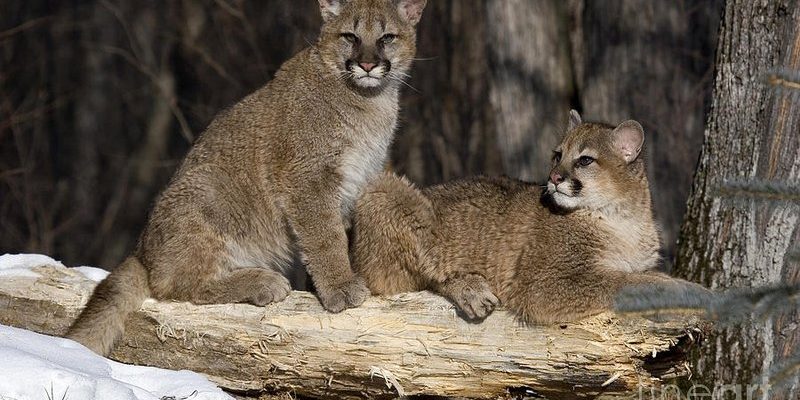
Cougars are solitary animals. Unlike wolves or elephants, they typically prefer to roam alone, coming together only to mate. Once a female is ready to start a family, she embarks on the journey of motherhood—one that is full of risks and rewards. You might be wondering, how do these big cats manage to raise their young in the wild? Let’s dive into the fascinating world of cougar parenting.
Finding a Safe Den
Before giving birth, the mother cougar needs to find a secure place to hide her cubs. This spot, known as a *den*, can be anything from a rocky crevice to a thicket of bushes. The choice of den is crucial. It not only has to provide safety from predators but also keep the cubs sheltered from harsh weather.
Generally, a mother will find her den in a remote area, away from human activity. This is important because human interactions can disturb them and lead to danger. Once she’s selected the perfect spot, she’ll give birth to a litter typically consisting of 2 to 4 cubs. The mother is very protective during this time. She won’t leave the den much, relying on her body’s fat reserves for nourishment.
In those early days, the cubs are completely helpless. They can’t see or hear, and they rely completely on their mother for survival. Imagine being a parent in a survival situation, where every decision counts. That’s exactly the kind of pressure a mother cougar faces right from the start.
Caring for the Cubs
After the cubs are born, their mother takes on the role of their primary caregiver. This means providing food, warmth, and protection. For the first few weeks, she stays with them to ensure they’re safe and well-fed.
Cougars primarily hunt deer, which is a critical food source. Once the cubs are a bit older, the mother will begin bringing food back to the den. She’ll leave them momentarily but is always nearby, ready to return. It’s like a game of hide-and-seek, where the stakes are incredibly high. The mother needs to balance hunting for food while ensuring her young ones stay out of harm’s way.
As the cubs grow, they start to explore their surroundings. The mother will encourage this by bringing them small prey. It’s a gentle way to teach them how to hunt—much like how parents might teach kids to ride a bike by starting with training wheels.
Teaching Critical Survival Skills
Once the cubs reach around two months of age, their learning truly begins. The mother doesn’t just provide food; she teaches them essential survival skills. This includes how to stalk prey, climb trees, and be aware of potential dangers.
You might think of it as a crash course in the wild. The mother will take them on short trips away from the den, allowing them to practice their skills. Learning to hunt and defend themselves is vital because, by the time the cubs are around six months old, they’ll need to be mostly independent.
In this teaching phase, it’s not just about hunting. The mother also teaches them how to communicate with each other, from vocalizations to body language. These lessons are crucial for building the family bond and ensuring the cubs can interact once they grow older and move into their own territories.
Independence and Leaving the Nest
As the cubs approach 6 to 12 months of age, they become more independent. This is when the mother starts encouraging them to venture out on their own. It’s a bittersweet moment, much like sending your kids off to college. The mother has given them all the tools they need to survive, but now they must go out and face the world without her.
While some cubs may stick around for a while longer, usually by the time they reach 18 months, they are off to find their own territories. The mother doesn’t chase them away; rather, it’s part of their natural cycle. She knows that they need to find their footing in a world that can be challenging, filled with both beauty and peril.
Honestly, this transition is essential for maintaining healthy populations. When cubs disperse, it helps prevent inbreeding and allows them to establish their own territories. This is how the cycle of life continues in the wild.
The Challenges of Motherhood
Despite all the nurturing, being a cougar mom isn’t easy. Mothers often face many challenges, from food scarcity to predators that might threaten their young. For instance, larger carnivores, like bears, could pose a significant risk.
Additionally, if a mother is injured or unable to hunt, she may struggle to feed her cubs. This is why having a solid hunting ability is vital for cougars. Female cougars, especially those raising their young alone, must be in peak physical condition to ensure their cubs thrive. It’s a tough job, but one that’s crucial for the survival of the species.
On top of that, human encroachment and habitat loss can disrupt a mother’s ability to find shelter and food. This means that the challenges of motherhood aren’t just natural—they’re increasingly tied to human activity, making it even more important to protect cougar habitats.
In the wild, cougars are both nurturing and formidable. Their approach to raising young is a blend of fierce protection and essential teaching. From selecting a safe den to providing food and survival skills, cougar mothers are remarkable in their dedication.
Ultimately, the way cougars raise their young is a testament to the resilience of nature. Every cub that grows into an independent adult helps maintain the balance of their ecosystem. By understanding cougar parenting, we can appreciate not only their struggles but also the beauty of their existence in the wild.
So, the next time you think about cougars, remember there’s more than just hunting and prowling involved. It’s a story of love, survival, and the fierce protection of their young—a narrative that speaks to the heart of what it means to be a parent in the wild.

